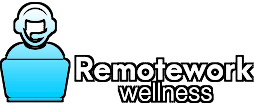
You don’t need a career coach to tell you that drifting isn’t a strategy. Whether you’re climbing the corporate ladder, launching your own business, or pivoting into something new, direction matters — and so does design. A good professional development plan isn’t a list of vague hopes; it’s a living structure. Done well, it becomes your compass, not your cage. But too many people treat it like a checklist instead of a tool for evolution. This isn’t about being rigid. It’s about staying clear-headed when distractions multiply and energy fades. Here’s how to build a plan that holds up through shifts, setbacks, and seasons.
Start With Structure, Not Pressure
Before you fill out another worksheet or download a template, pause. The first move isn’t tactical — it’s architectural. You need a structure that doesn’t collapse under momentum shifts. That starts by breaking your goals into clear steps, not vague dreams. Think of your plan like scaffolding: it should support progress without locking you in place. Focus less on ambition and more on translation. What does growth look like this month? How would you measure it in real life, not on a spreadsheet? Anchor your thinking in clarity — it’s what gives your plan both flexibility and force.
Define Goals With Real Consequences
“Grow professionally” is not a goal — it’s a placeholder. Your goals should be friction-ready: detailed enough to resist distortion under stress. That’s where using professional SMART criteria makes a difference. It’s not about acronym-worship; it’s about language that holds you accountable. Specific. Measurable. Attainable. Relevant. Time-bound. You don’t need to obey it religiously — but you do need to write goals that survive bad moods and low energy. Good ones will. Bad ones will vanish the moment urgency kicks in.
Build Friction Buffers Around Admin
You can’t grow if you’re drowning in forms, compliance, and back-office noise. Delegate early, even if it feels premature. Use an online formation service like ZenBusiness to strip away the parts of entrepreneurship that drain focus but don’t build skill. Administrative friction doesn’t just steal time — it steals momentum. And without momentum, even the best development plan gathers dust.
Treat Learning Like a Utility, Not a Luxury
No one has time to “keep up” — which is why you need to make upskilling automatic. That doesn’t mean enrolling in a new certification every quarter. It means baking learning into your daily inputs: the articles you read, the people you follow, the way you debrief projects. Growth doesn’t always look dramatic; often it looks like embracing lifelong knowledge-building. Stack that over time, and you’ve got transformation. Ignore it, and you’ll eventually be outrun by someone who didn’t.
Don’t Chase Mentors — Design Guidance Loops
Mentorship isn’t magic. But it is momentum, when done right. The key is not finding “the one” but building structured mentorship relationships. Think of it like an accountability circle — someone a few steps ahead, not a guru. Ask sharper questions. Stay curious, not clingy. And give back when it’s your turn. Most careers don’t advance in a straight line; they zigzag on insight and recalibration. Mentors make that recalibration faster, and a little less lonely.
Track Without Turning Into a Robot
Progress is rarely obvious in the moment. That’s why your plan needs reflection built in. Once a month, stop. Look at what worked, what didn’t, and where the friction is hiding. You’re not just tracking — you’re diagnosing. Set scheduled milestones to check advancement, not to judge progress harshly, but to recognize patterns you’d otherwise miss. A year from now, those notes will be gold.
Make Strategy the Spine, Not the Surface
Professional development is strategy, not scheduling. If your plan doesn’t map back to the life you’re trying to build, start over. And be ruthless about alignment. Not every opportunity deserves your time, even if it sounds impressive. Start aligning roles with your career vision instead of reacting to what lands in your inbox. Strategy means you get to say “no” faster — and with less guilt. That’s the freedom structure buys you.
A professional development plan isn’t a performance review cheat sheet. It’s a pattern of choices that add up to a life. Make it clear. Make it usable. Revisit it often — especially when you feel stuck. Because being stuck isn’t failure. It’s feedback. Your job isn’t to have all the answers. It’s to build a system that keeps you asking the right questions and moving forward even when things get weird. That’s what a good plan does: it doesn’t just map growth — it survives it.
Discover how Hilltop Secretarial Service can transform your business operations with expert virtual office assistance, and join the ranks of satisfied clients who have trusted us for over 25 years!

